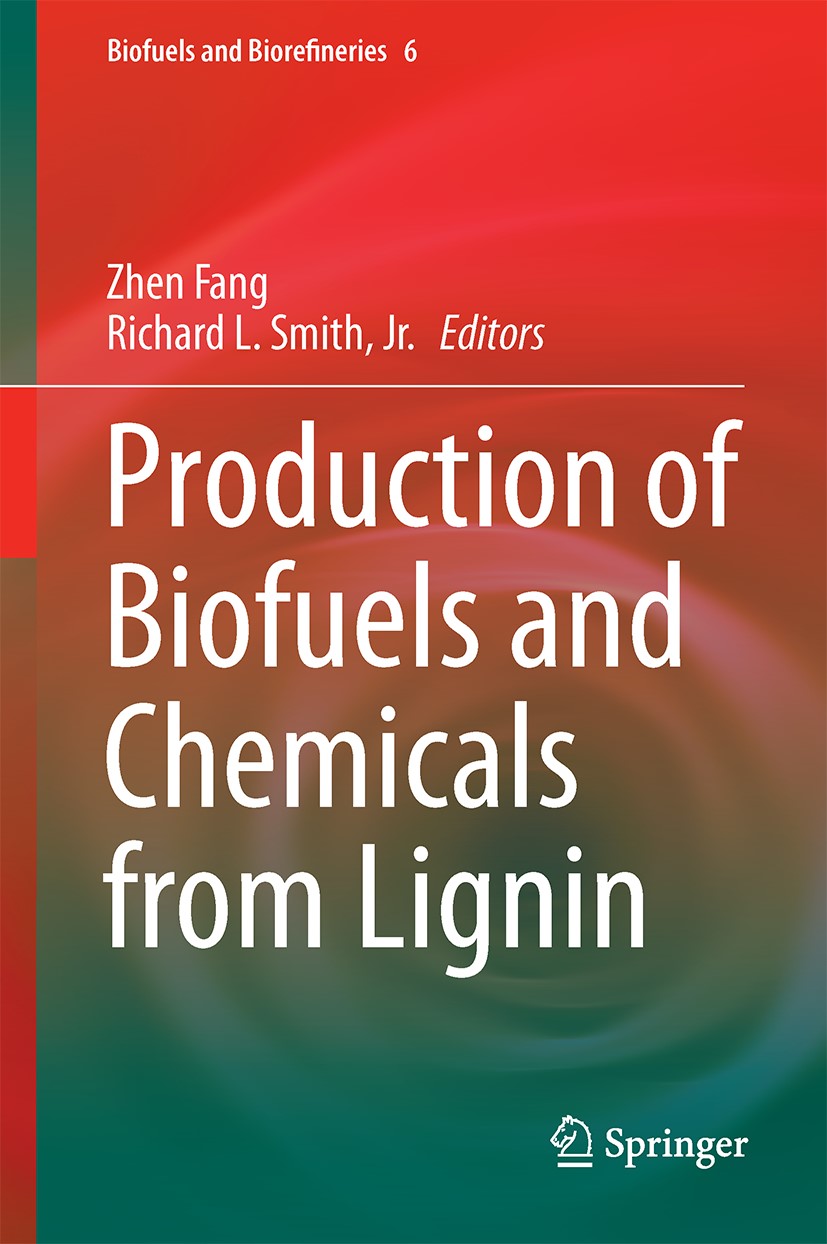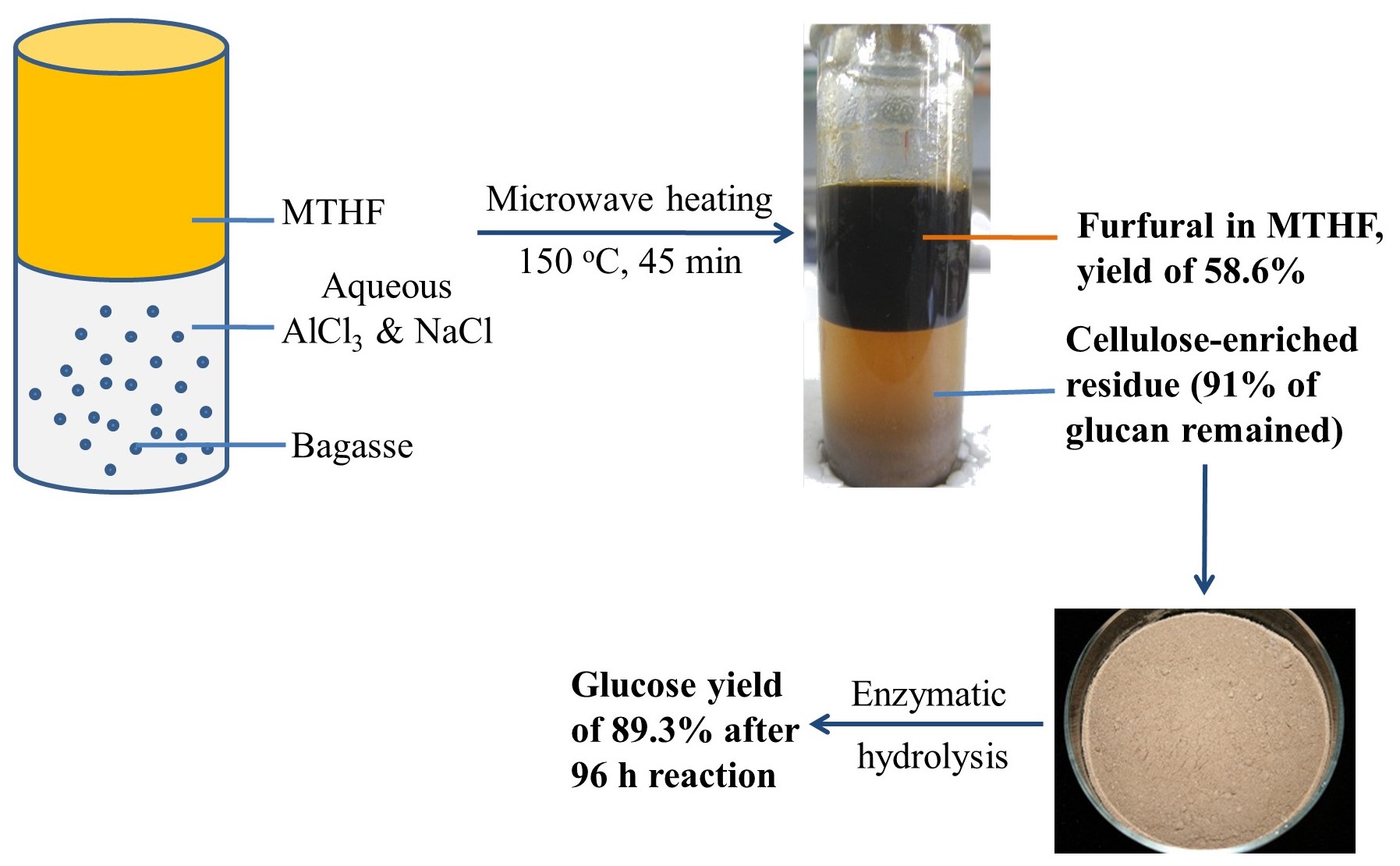A new Springer book “Production of Biofuels and Chemicals from Lignin” was published
星期六, 15 10 月, 2016A new Springer book “Production of Biofuels and Chemicals from Lignin” was published
Recently, Springer has published a book entitled “Production of Biofuels and Chemicals from Lignin” edited by Profs. Zhen Fang and Richard L. Smith Jr., Springer, Hardcover •ISBN 978-981-10-1964-7, 435 pages, 2016. (http://www.springer.com/cn/book/9789811019647).
Lignin is the largest source of renewable aromatics in the world and is produced as a byproduct in huge quantities by the pulp and paper industry in the form of black liquor (ca. 50 million ton/a), but is also expected to be a major byproduct in emerging industries related to biofuels and bioproducts (ca. 2.7-8.1 million ton/a). The present text provides state-of-the-art reviews, current research and prospects on lignin production, lignin biological, thermal and chemical conversion methods and lignin technoeconomics. Fundamental topics related to lignin chemistry, properties, analysis, characterization, depolymerization mechanisms, enzymatic, fungal and bacterial degradation methods are covered. Practical topics related to technologies for lignin and ultra-pure lignin recovery, activated carbon, carbon fiber production and materials are covered. Biological conversion of lignin with fungi, bacteria or enzymes to produce chemicals is considered along with chemical, catalytic, thermochemical and solvolysis conversion methods. A case study is presented for practical polyurethane foam production from lignin.
This book contains 13 chapters contributed by leading experts in the field. The text is arranged into four key areas:
Part I: Lignin and Its Production (Chapters 1-3)
Part II: Biological Conversion (Chapters 4-6)
Part III: Chemical Conversion (Chapters 7-12)
Part IV: Techno-economics (Chapter 13)
Lignin has a bright future and will be an essential feedstock for producing renewable chemicals, biofuels and value-added products. Offering comprehensive information on this promising material, the book represents a valuable resource for students, researchers, academicians and industrialists in the field of biochemistry and energy.
This book is the sixth book of the Springer series entitled, “Biofuels and Biorefineries” (Prof. Zhen Fang is serving as editor-in-Chief), and the thirteenth English book published by Prof. Zhen Fang since 2009.
Biofuels and Biorefineries:
http://www.springer.com/series/11687?detailsPage=titles

斯普林格新书《木质素生产生物燃料和化学品》出版
由方真教授和日本东北大学Richard L. Smith Jr.教授主编的新书《Production of Biofuels and Chemicals from Lignin》,最近由斯普林格公司出版发行。(精装,435页, ISBN 978-981-10-1964-7, 435 pages, 2016。)(http://www.springer.com/cn/book/9789811019647)。
木质素是世界上可再生芳烃的最大来源,并且作为副产物在纸浆和造纸工业中以黑液(约5千万吨/年)的形式大量生产,但也预期其将作为与生物燃料和生物制品相关的新兴产业的主要副产品(约为270-810万吨/年)。本书回顾了关于木质素生产,生物、热和化学转化木质素方法和木质素技术经济学的最新研究和前景。涵盖了与木质素化学、性质、分析、表征、解聚机理、酶、真菌和细菌降解方法有关的基本问题。涉及木质素和超纯木质素回收技术、活性炭、碳纤维生产和材料的实用技术。与化学、催化、热化学和溶剂分解转化方法一起,介绍了用真菌,细菌或酶生物转化木质素生产化学品。同时,给出了一个从木质素实际生产聚氨酯泡沫的案例研究。
本书包含13章,由来自世界各地该领域的顶尖专家撰写,每章均被同行评审和编辑以提高文本的质量、研究范围和覆盖的主题。该书包括四个关键领域:第一部分:木质素及其生产(第1-3章),第二部分:生物转化(第4-6章),第三部分:化学转化(第7-12章)和第四部分:技术经济学(第13章)。
木质素具有光明的未来,将是生产可再生化学品,生物燃料和附加值产品的必要原料。该书为这一有希望的领域提供了全面的信息,为生物化学和能源领域的学生,研究人员,学者和实业家提供了宝贵的学术资源。
该书是斯普林格系列丛书“生物燃料和生物炼制- Biofuels and Biorefineries”(方真教授担任该丛书总编辑)出版的第六本专著,也是方真教授自2009年以来,编著出版的第十三部英语专著
生物燃料和生物炼制丛书:
